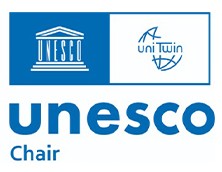Elisa Martins
Journalist, special for Yvirá
It is essential to reformulate the foundations and methodology of literacy teachers in Elementary Education and Youth and Adult Education.
It is crucial to put an end to the myth that literacy begins with the ‘writing’ of one’s own name, because those who have not learned to read first are incapable of writing. This is not writing, it is drawing.
It is around the end of the 6th or beginning of the 7th year that most children have the cognitive, perceptual and emotional maturity to begin learning to read.
Literacy teachers are not prepared, and the teaching material is terrible. The literacy student is not educated as a whole, in areas such as cognition, perception, sensory-motor skills, affections, socialization, and aesthetics.
Elisa Martins
Journalist, special for Yvirá
JULY/AUGUST 2025 | nº 2 |Linguist Leonor Scliar-Cabral criticizes the preparation of literacy teachers and the quality of teaching materials and defends a national project built based on advances in Linguistics and Neuroscience
The sequence of worrying results revealed in studies assessing learning and monitoring educational policies for literacy in Brazil in recent years raised an alarm and prompted linguist Leonor Scliar-Cabral to dedicate her professional career to combating functional illiteracy in the country. More than that, they led her to develop her own method, the Scliar Literacy System, based on neuroscience and her experience in language acquisition studies.
In conversation with YVIRÁ, the emeritus professor at the Federal University of Santa Catarina (UFSC) states that the causes of poor performance begin mainly with poor initial reading skills and literacy without scientific basis. Check out the interview below.
It is essential to reformulate the foundations and methodology of literacy teachers in Elementary Education and Youth and Adult Education.
In May, the Functional Literacy Indicator (INAF) released a new survey, which showed that 29% of Brazilians are functionally illiterate. The rate has remained the same since the last study in 2018. How can we get out of this dramatic situation?
LEONOR SCLIAR-CABRAL: The data reveal that the situation of functional illiteracy remains serious in Brazil, because in-depth measures to eradicate it have not been taken. First, it would be essential to reformulate the foundations and methodology of literacy teachers in Elementary Education and Youth and Adult Education. It is essential to dispel the myth that literacy begins with the “writing” of one’s own name, because those who have not learned to read first are incapable of writing. This is not writing, it is drawing. Another myth is to teach literacy by naming letters, which doesn’t help at all. We do not read the written word “Vivi” as “veivei”. It is necessary to apply advances in science such as linguistics, psycholinguistics, the neuroscience of reading, neuropsychology and sociolinguistics to the foundations and methodology of literacy teachers.
It is crucial to put an end to the myth that literacy begins with the ‘writing’ of one’s own name, because those who have not learned to read first are incapable of writing. This is not writing, it is drawing.
What examples could you give of good practices to reverse the high rates of illiteracy?
LSC: The most successful one I found was the Early Intervention Initiative program in Dunbartonshire, Scotland, which in ten years eradicated functional illiteracy in the county with the worst situation in the United Kingdom. When the program began in 1997, only 5% of children in the first grade of primary school, our elementary school in Brazil, achieved high scores in reading. In 2005, when children in the program began to enter secondary school, the functional illiteracy rate dropped to 6%. The program applied the synthetic phonics method and the Montessori multisensory approach, with teaching materials developed based on research, specially trained teachers, ongoing assessment and monitoring, in addition to extra time for reading in the curriculum, counseling for families and caregivers, and the implementation of a literacy environment in the community.
Is there an ideal age group or class for students to begin learning to read and write? Why are children being introduced to the alphabet and reading and writing at an increasingly early age in schools?
LSR: The reason for introducing the alphabet to children, even in early childhood education, is for the school to “show its work”. There is no experimental evidence to support this approach. It is around the end of the 6th or beginning of the 7th year that most children have the cognitive, perceptual and emotional maturity to begin learning to read.
It is around the end of the 6th or beginning of the 7th year that most children have the cognitive, perceptual and emotional maturity to begin learning to read.
What led you to create the Scliar Literacy System, and what does it consist of?
LSC: The methodology of the experiment in Scotland was an inspiration and, in 2012, I created the Scliar Literacy System, with the collaboration of the team from the “Ler & Ser project – combating functional illiteracy”. The great motivation came from the fact that, firstly, despite the efforts of educators, the rate of functional illiteracy was very high and, unfortunately, it continued. The methodology consists of ongoing training for educators in the first and second years of Elementary School, in weekly courses, with pedagogical material based on scientific advances. Educators use the literacy fundamentals books for reading and writing from the Scliar-Cabral Method of literacy, in addition to the scripts and appendices with instructions for implementing the lesson plans for the first and second years of Elementary School, using the same method. Children use the books “Aventuras de Vivi” and “Aventuras de Vivi no Mundo da Escrita”, the “Activity Book: Module 1, Reading” and “Module 2, Writing”, also using the same method. One of the most notable cases of this model being applied was in Lagarto, in Sergipe, and in São José da Laje, in Alagoas. These were the states with the worst performance in the 2016 National Literacy Assessment (ANA). The satisfactory reading and writing skills were achieved thanks to ongoing teacher training, strategic support from the Municipal Education Departments, which provided resources, including for the acquisition of teaching materials, collaboration from family members, and support from communities and the municipal legislative and judicial branches.
How does the Scliar Literacy System apply neuroscience and your experience as a linguist to improve literacy indicators?
LSC: We know that the acquisition of the oral system occurs naturally and spontaneously in children who do not have major sensorimotor, perceptual, or cognitive disorders. The first words occur around one year of age. The written system is learned in the context of teaching and learning in a systematic and intensive manner, when the child has already reached a certain cognitive, linguistic and emotional maturity. While oral communication has been a matter of human survival since the beginning of the humanization process, writing, distinct from painting, drawing or other means of memorization, appeared very recently, approximately 5,000 years B.C. There were gradual adaptations, from logographic systems to phonographic, syllabic and alphabetic systems. The latter, which are the closest to the architecture of how oral verbal language is structured and functions, however, present tremendous difficulties for learning, that is, for literacy. To understand the nature of these difficulties, it is necessary to explain the concept of level in linguistics. The architecture of languages and their functioning begins at the lowest level, with a very small number of distinctive phonetic features, which are integrated to form, at the next level, a very small number of phonemes in each language. All lower levels, with few and closed elements, must be automated to free the mind for creative processes, which come later, with texts. This principle undermines the arguments of those who condemn phonics methods under the false claim that they force children to repeat meaningless sounds.
Literacy teachers are not prepared, and the teaching material is terrible. The literacy student is not educated as a whole, in areas such as cognition, perception, sensory-motor skills, affections, socialization, and aesthetics.
There has been a kind of “ideological war” over literacy methods in recent years. How does it affect classroom teaching and the fight against functional illiteracy in Brazil?
LSC: Yes, there is an ideological war, but, above all, there are economic interests in not losing jobs, and publishers’ interests in maintaining the monopoly to recommend the adoption of teaching materials.
In your opinion, what are the factors that have the greatest impact on better learning to read and write? Where is Brazil’s biggest problem in this matter?
LSC: The factors that have the greatest impact come from the lack of a public policy that relies on advances in Linguistics, Psycholinguistics, Neuroscience of Reading, Neuropsychology and Sociolinguistics, for the foundations and methodology of literacy. Literacy teachers are not prepared, and the teaching material is terrible. The literacy student is not educated as a whole, in areas such as cognition, perception, sensory-motor skills, emotions, socialization, and aesthetics.
How important are education assessment systems, such as Saeb, in verifying learning and monitoring educational policies? And what can we expect from the most urgent actions to reverse this situation of functional illiteracy?
LSC: The Saeb assessment system is very important and was used in my experiments. Assessments should be made regularly and in multiple ways. I hope the government changes its public literacy policy more urgently.






